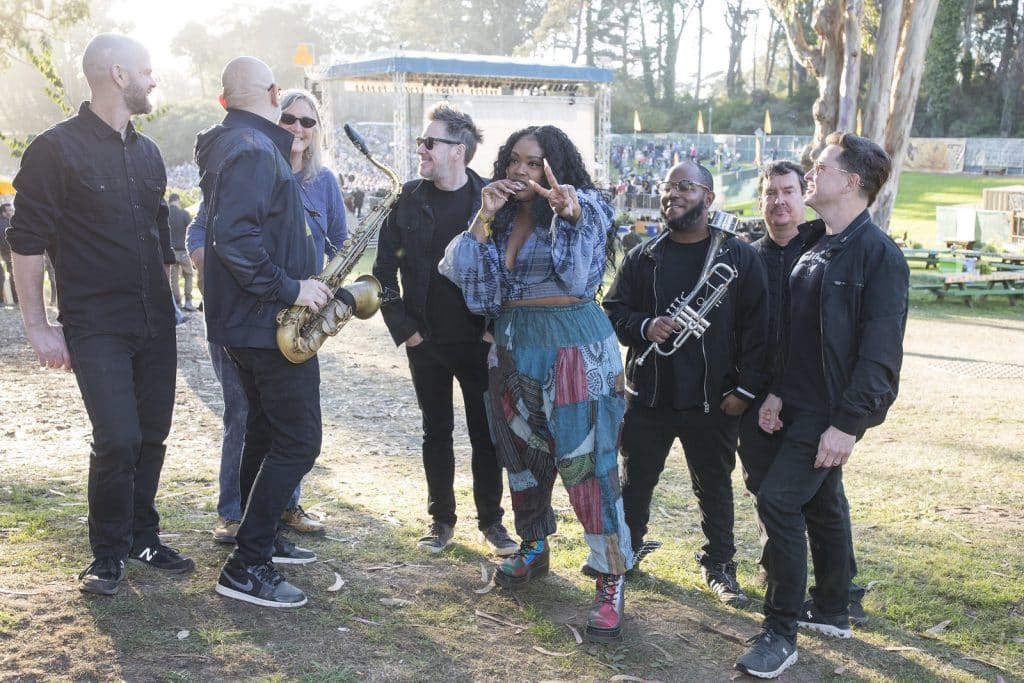Features
Qs With: Sheri Sternberg, Executive Producer Of Hardly Strictly Bluegrass

Hardly Strictly Bluegrass, the venerable San Francisco free festival that draws hundreds of thousands of music fans to Golden Gate Park every fall, returns Sept. 29-Oct. 1, relatively “back to normal” after two years of living online in filmed and livestream states and last year’s celebratory, “Home Sweet Home”-themed return to the park.
But “back to normal” doesn’t mean unchanged. From its beginnings in 2001 as a small “Strictly Bluegrass” affair underwritten by San Francisco financier Warren Hellman, the festival has always adapted with time.
Hellman, who left an endowment to continue funding HSB long after his 2011 death, has now been gone more years than he hosted his “gift to the City of San Francisco” and HSB is now an annual project of the Hellman Foundation.
A new generations of fans, artists and even Hellman family members are grabbing the baton to keep HSB moving forward.
Mercenary Productions founder and HSB executive producer Sheri Sternberg has been there from the start, not just ensuring the show goes on, smoothly and safely, but she and her core staff provide continuity and institutional memory that allows for change but with great respect for festival traditions for the roughly half-million music lovers who come for the weekend’s unique vibe as well as the music.
Pollstar: Last year’s “Home Sweet Home” edition was unlike any other Hardly Strictly Bluegrass, wasn’t it?
Sheri Sternberg: There was a palpable joy on the artists’ faces. Watching them interact backstage and collaborate with each other at an unprecedented level was the part that you can’t script, you can’t plan for, and it has to come from them and their ability to talk to each other backstage and be excited about wanting to sit down with each other and play some old tunes or play some covers.
It was the first year festivalgoers had to pass through gates, metal detectors and bag searches. Unlike most festivals, fans could previously come and go through the park from any point.
Everything really went well for that first year. We had metal detection at all the gates and it just showed our audience is the best. And they pay attention. They come prepared, they come happy, enjoy themselves, they respect the park, and they respect other attendees. Once they’re inside, it’s not noticeable.
There’s some reconfiguration of the stages this year, the addition of one called Horseshoe Hill and the return of the Arrow stage. What’s your thinking behind that?
The new Arrow stage is kind of a hybrid between the Porch stage, which people loved, and the old Arrow stage that allows us to take some pressure off the front entryway [by moving the former Porch stage deeper into the festival area]. It was a difficult decision, but we believe it serves the artists and the audience better by doing it this way. It will be lower to the ground than the larger stages so that we can still have intimate performances and better service the community.
Horseshoe Hill is new. And it’s got a new element for HSB, with a collaboration with City Lights Books, a San Francisco institution founded by Lawrence Ferlinghetti. What’s behind that?
Horseshoe Hill is really the brainchild of Warren Hellman’s grandchildren. They’ve been wanting to do something to contribute to the event in their own way. It’s in a glade, in the shadows of trees. It’s a small spot, but we can program it the way they would like to in conjunction with Chris Porter, our music curator. They talked about what kind of things we were missing, that we couldn’t really get away with at other places [in the park]. There’s going to be poetry, and there’s also going to be a tribute to Doc Watson At 100. Leyla McCalla will do more of a spoken-word set, just her and her percussionist, in addition to a regular music set at the Towers of Gold stage.
Bringing in City Lights seems to fit with the mission of promoting community and art, among other San Francisco values.
City Lights really embodies somehow a lot of the same spirit that we do, and a lot of
the same values that we do in terms of community, and place in the community, and
how you want your art to be seen and heard by others. So that was a good, nice partnership for them to bring us some of their artists and poets to have them perform.
Who are you especially excited to have this year, in addition to HSB “family” like Emmylou Harris and Steve Earle?
I think Rickie Lee Jones is going to be our sleeper hit this year. Frank Riley [founder of High Road Touring] had a birthday party last year and Rickie Lee sang “Last Chance Texaco” with Jeff Tweedy, and I knew we just had to get her into this space.
I’m really excited about Rufus Wainwright; I’m thrilled he’s coming here to perform. We have The Teskey Brothers and Hermanos Guiterrez, and we have Irma Thomas this year; there’s newer artists like Gaby Moreno. And then we have The Church, which is an interesting booking (thanks, Chris!). And there’s [the live debut] of The Third Mind, which is a project of Dave Alvin’s. And, of course, Buddy Miller’s [curated] Cavalcade of Stars. And how can we not mention Jason Isbell & The 400 Unit? We can’t.